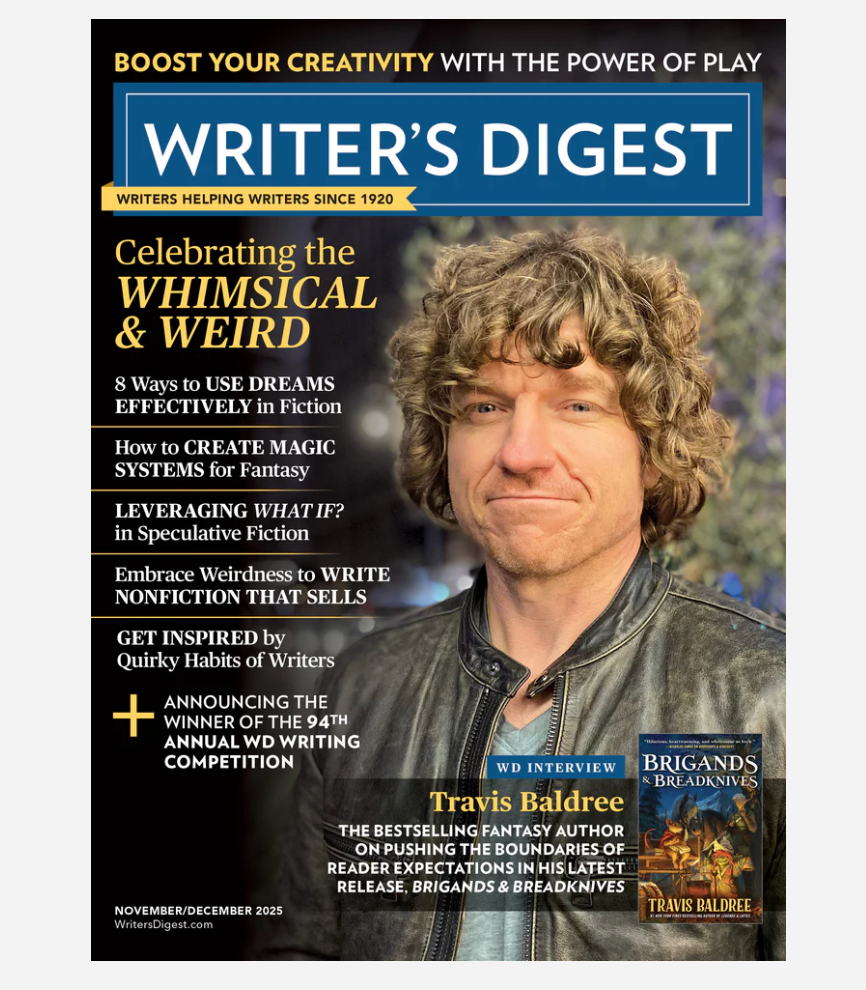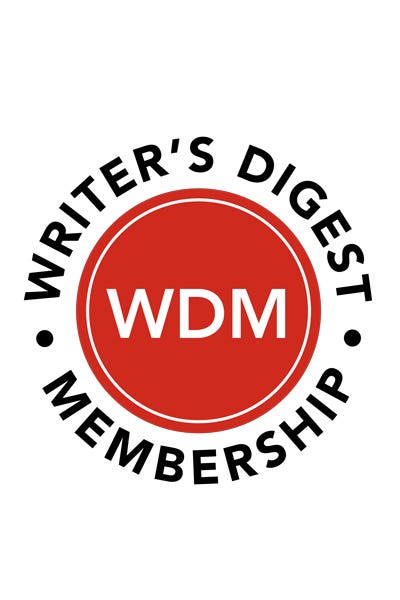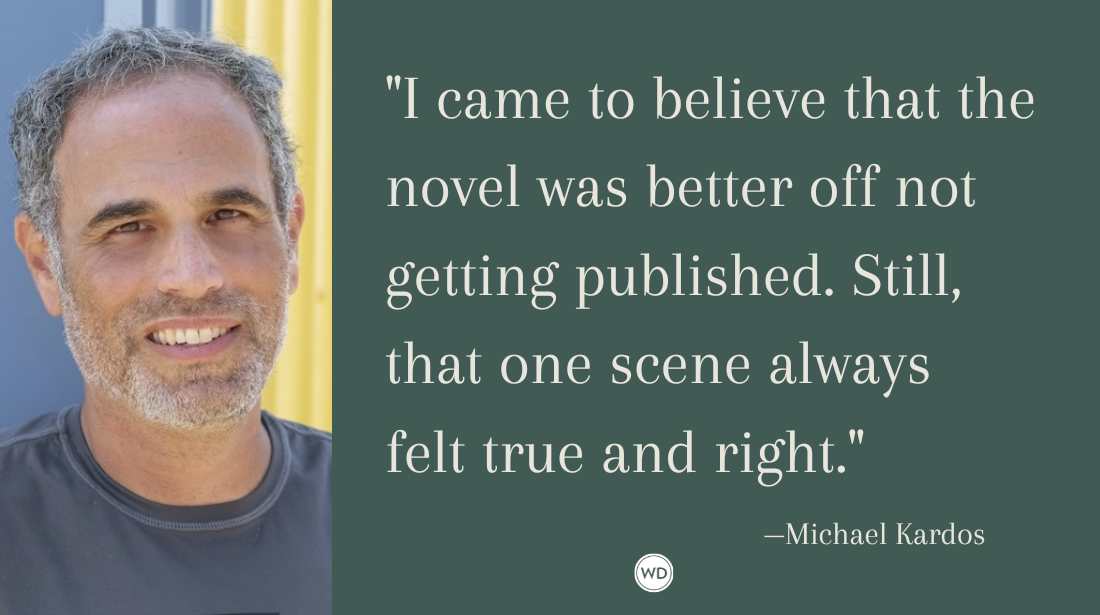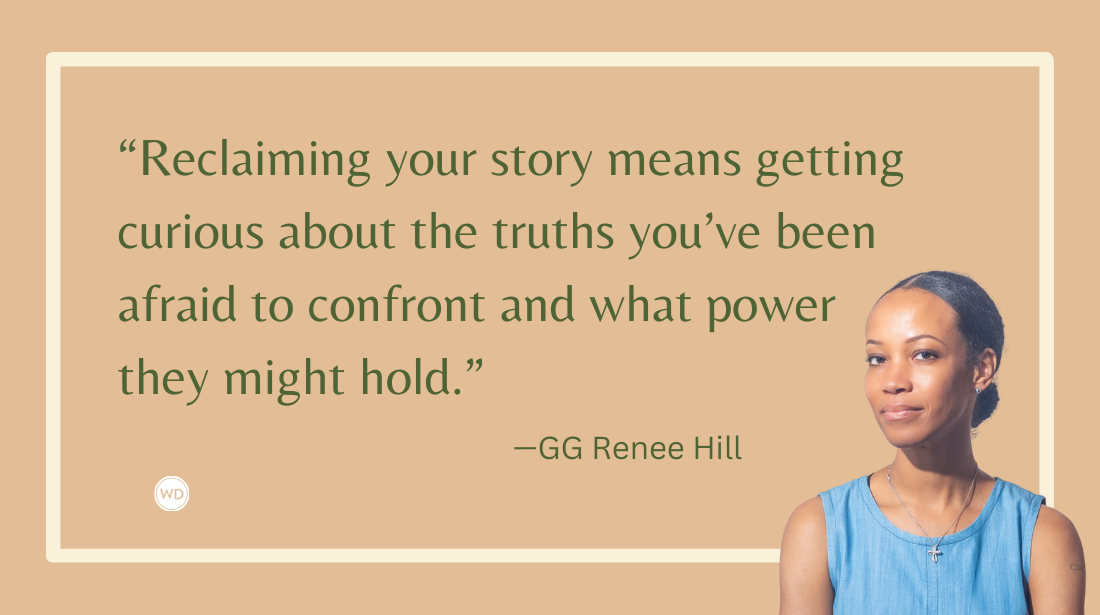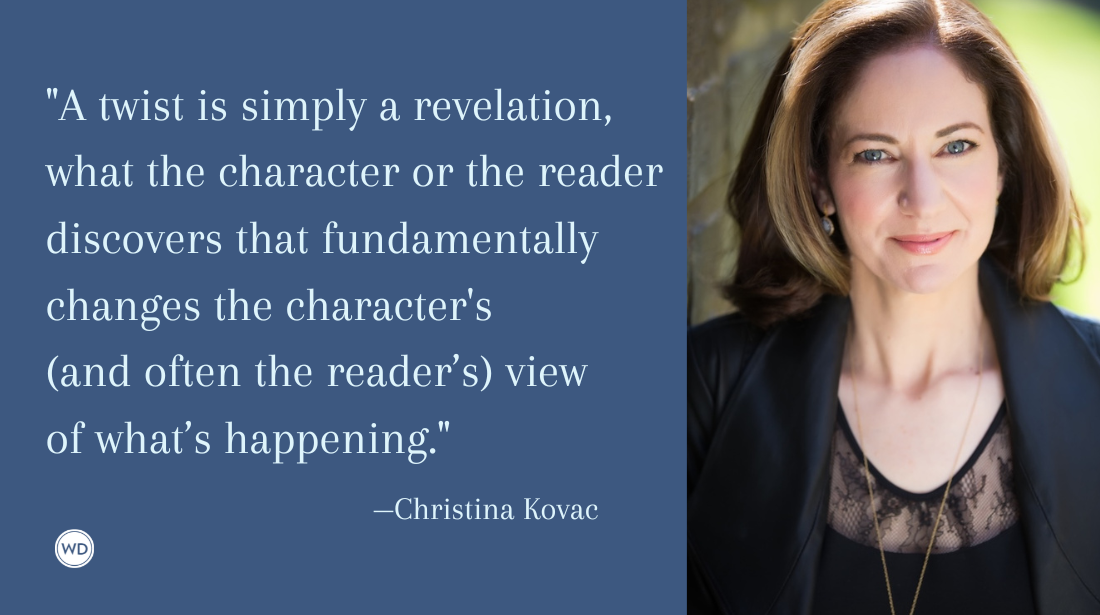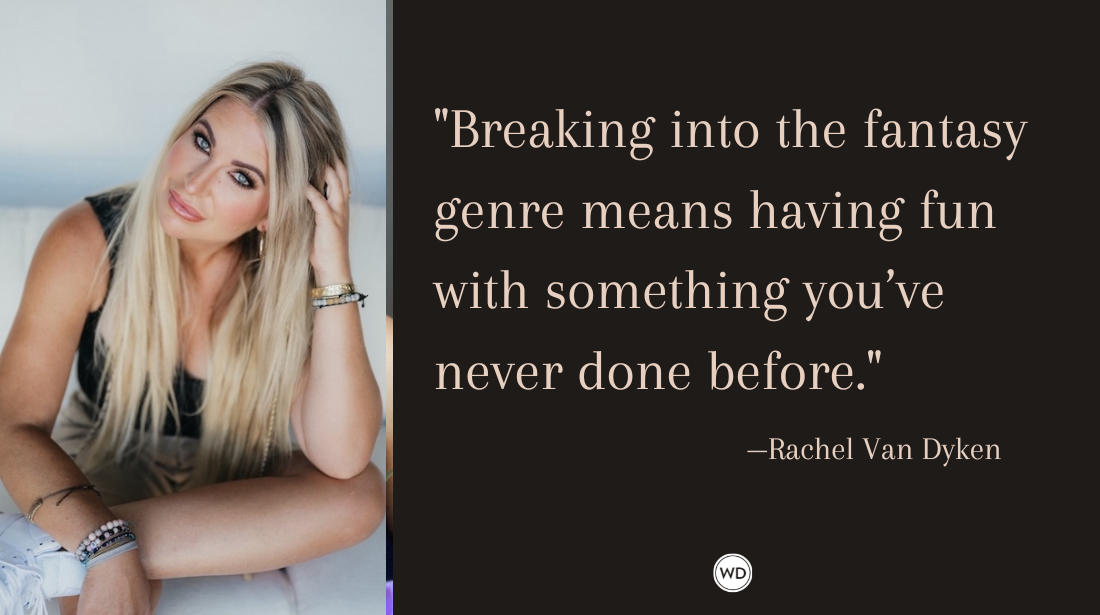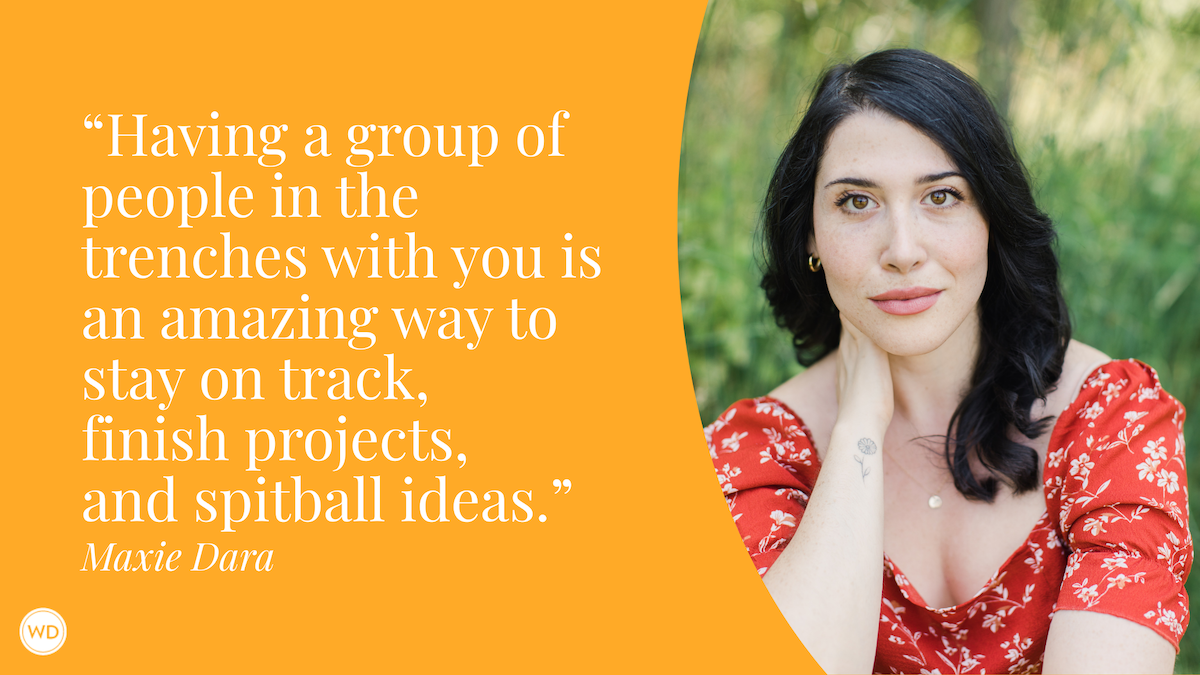J. Kevin Tumlinson: On Effective Writing and Avoiding Burnout
In this indie author spotlight, novelist J. Kevin Tumlinson shares his process for effective writing and how to avoid burnout.
(A condensed version of this spotlight appears in the November/December 2025 issue of Writer's Digest.)
Author: J. Kevin Tumlinson
Books, Genre, Imprint:The Coelho Medallion, Shaken, Evergreen, Citadel: First Colony (Archaeological thriller, technological thriller, science fiction; Knovelton Books)
Writes from: I get around. My wife and I travel extensively, and we even did full-time van life for three years (and full-time RV life for three years prior to that). So, I’ve written from cafés, coffee shops, hotel lobbies, and the occasional lakeside picnic table in spots all over the world. These days, I mostly write from my home office, just north of Austin, Texas.
Why self-publish?
Initially, I came to self-publishing because I was too impatient to wait and wade through gatekeepers. I had some traditional experience, in the form of writing for and submitting to magazines. But it bothered me. Writing was something I loved doing and could do well and do fast. But submitting, waiting for agents and editors to get back to me, then rewrites and edits—I was too impatient for all of that. Probably not the best color on me, I admit.
But as someone who is fiercely independent, particularly when it comes to writing, the self-publishing process just fit me best at the time.
The irony, I think, is that all that independent publishing experience ended up preparing me for a more traditional approach. I got my “million words of practice,” but I also got a feet-first education into how publishing works and how to be successful in the publishing space. I understand the challenges better now than I did when I was submitting queries and manuscripts. And I have a lot more patience.
Self-publishing has helped round off the rough edges a bit. And so, in my “old age” as a writer, I’m ready for a new experience and a new approach.
Had you considered traditional publishing?
I really wanted a traditional deal in those early days. But I was thoroughly unrealistic and unreasonable about it. I think some part of me thought it was magic. “If they would just publish my brilliant book, they’d make millions and so would I. And then they’d know what a genius I am!”
Not a literal conversation I had with myself. But not far off, I think.
For years now, I’ve said that if the right traditional deal came along, I’d take it. I feel that I’ve grown and matured a lot since I started, and now I have the patience and skill to take on a contract and do it right. I’ve been drained of my former arrogance, we’ll say, and realize now that publishing in the traditional space is a team effort. Now that I’ve got a few hundred manuscripts under my belt and have spent decades building up a platform for promoting them, I have a much greater sense of who I am as an author. And I think a traditional deal would be a good move for me.
I recently co-authored a book with J.D. Barker—a New York Times–bestselling author who often co-writes with James Patterson. That experience was much more traditional in scope and method, and it showed me that I’ve matured enough to take that branch of the road. So, I’m leaning into that now and starting to produce books specifically for pitching. I’m looking forward to seeing where it takes me.
Order a copy of The Coelho Medallion today:
Indie publishing appeal?
All the usual things—the liberty to write what I choose, even if it’s experimental or bends a genre a bit. The freedom to set my own deadlines and publishing schedule. The bigger royalty. Just the independence and empowerment of the whole thing.
But the unexpected benefit that I’ve only come to understand and appreciate within the last couple of years is the fact that indie publishing gave me a place to hone my craft and my discipline, and to prove myself. After writing hundreds of novels and nonfiction books—with 70+ novels in print worldwide—if there’s one thing I can be certain of, it’s that I can do it. I can write a book that readers love. That’s not just proof, it’s validation.
Biggest challenge?
If you owned a coffee shop, you’d take it as given that there’s stuff you have to do to build and grow the business. Inventory, location rental, customer service, taxes and bookkeeping. We get that this is part of the gig.
Most indie authors tend to overlook this aspect of their own business, though. Just like a coffee shop, we have overhead and responsibilities. Marketing is one. Production costs, including editing, layout, and cover design. Distribution—do we go direct to a retailer, or do we use a service like Draft2Digital to distribute on our behalf? We might even have to consider hiring employees, such as a virtual assistant, to help take this stuff on so we can focus on the writing.
That was the most challenging thing for me, for a long time. I forgot to think of this as a business. So, a lot of that stuff got away from me, and the business suffered.
Now that I see it and embrace it, the business is better, and things are a bit easier. Still, I got into this like everyone else … to write cool stories. I don’t want to think about taxes or marketing.
Wish I’d known …
The one thing about my writing career that I never saw coming was burnout. I made my bones in the business by using what we call the “rapid release model.” I have always been a fast writer and good at it. But early on, I did crazy stuff. I was writing a book a month at one point, which seems kind of quaint now, in the age of people using AI to write 100 books a day or whatever. But it was a solid, breakneck pace back then. And sometimes I’d do crazy experiments, such as when I wrote the first draft of my book Evergreen in a single 18-hour day.
Crazy. Fun. But what I didn’t realize was that all that speed and the constant press of production was coming at a cost. I didn’t take anything resembling an actual vacation for most of 20 years. I kept pressing and kept pushing. And when the burnout finally happened, I never saw it coming.
So, I wish I’d known that it’s OK to take a break, even from this thing I love. I still write every single day, but I give myself the slack to rest from it when I need to. It’s more important than you might think.
Order a copy of Shaken today:
Writing Advice
I stole an idea from Dean Wesley Smith, rebranded it, tweaked it, and made it my own.
He does this thing he calls “cycling.” Effectively, he writes 500 words, cycles back, re-reads and edits what he’s done, and then continues on for the next 500 words. By the time he’s finished, he has a pretty clean manuscript.
I adapted this into what I call “looping.” In this, I write to my daily word target (it varies, but right now it’s 2,000 words per day until the draft is done). Each day, though, I loop back to where I started the day before. I read and edit everything I wrote the previous day, until I reach where I stopped. Then I continue on.
Any words I add while editing count toward my daily word target. But this process also allows me to rebuild momentum, so I can continue the story in the same voice and energy.
I get cleaner words, but I also fall back into the world of the story, while constantly pushing it closer to the finish line.
That’s the best technical advice I can offer on craft. If you want my best heartfelt advice, it’s this: Only write what you love. Everything else is garbage.
Publishing Advice
Whether you are an indie author or have a traditional deal, your success is going to be entirely dependent on your platform.
That can mean a variety of things, but this is what I mean by it: Your platform is all the ways that you can reach the readers who will buy, read, and review your books.
Social media can be a part of your platform but doesn’t have to be. Even in-person events, like book signings and talks, can be part of this. But the one thing that your platform must include—and I mean without exception—is an email mailing list.
These days, I recommend that most writers use Substack to build their list. I like Substack because the list you build belongs to you, so you can take it with you to another email service, if you need to. The platform has high “discoverability,” meaning that readers find you when you publish regularly. And there are other perks to it, such as the ability to monetize your content, host a podcast, and even engage in social-media-style posts.
Regardless of how you do it, though, building an email list is the only real “must” in this business. Do it, or perish.
Marketing Strategy
I used to rely heavily on ads to market the books, but in my experience, they’ve become a lot more expensive and a lot less effective over the past few years. So, I’ve been leaning in on other methods. Mostly that comes down to a content marketing strategy, where I write and publish articles, posts, and short stories with the aim of getting readers to sign up to my mailing list (via Substack, mostly, but also right from my website).
I also do a lot of podcasts and other interviews, and post videos to YouTube, in an effort to increase the chances that someone will stumble upon me and my work.
I’m starting to look at more ways to reach a wider audience, through things like contests and giveaways, and special events. But these require more time and overhead.
In short, anything that helps me put my name and my work in front of the right reader, at the time they’re most prepared to buy, is good marketing. And that gives me plenty of runway to experiment with new things.
Don’t Skimp on …
There are two sacred commands in self-publishing:
The first is, “Thou shalt not skip the editing.”
The second is like it: “Thou shalt invest in a professional cover.”
Both of these require a budget, which is why a lot of indie authors skimp on them. That’s a mistake. Because these two things are often the line between a book that does well and one that goes unread.
It all comes down to experiences and expectations.
If you managed to get someone to buy the book, and the editing is bad or absent, they’re going to have a bad experience. At best, they’ll put the book down and never read anything from you again. At worst, they’ll take to Amazon and leave a review that will singe your eyebrows and leave a stain for all the world to see. That may keep future readers from even giving you a shot.
But before anyone can see your lack of editing, they’ll have to actually want to buy the book. And if you have a terrible over, that’s not going to happen.
There’s a psychology to cover design. A good cover designer understands how to make your book look similar enough to other successful books in the same category that readers want to read it. They understand how to make it eye-catching and appealing when it’s the size of a postage stamp.
These are both important skills, and they’re worth paying for. And you should pay for them. You will pay for them, one way or another. Either up front, when they can benefit you, or later, when they cost you readers.
Don’t skimp.
Website: KevinTumlinson.com
Awards or Recognition:
- 2019 Shelf Unbound Best Indie Book
- 2018 Book Excellence Awards
- 2016 Shelf Unbound Best Indie Book
- 2013 Writers of Future
- 2005 Danny Lee Lawrence Award for Fiction
- 2003 Danny Lee Lawrence Award for Fiction


